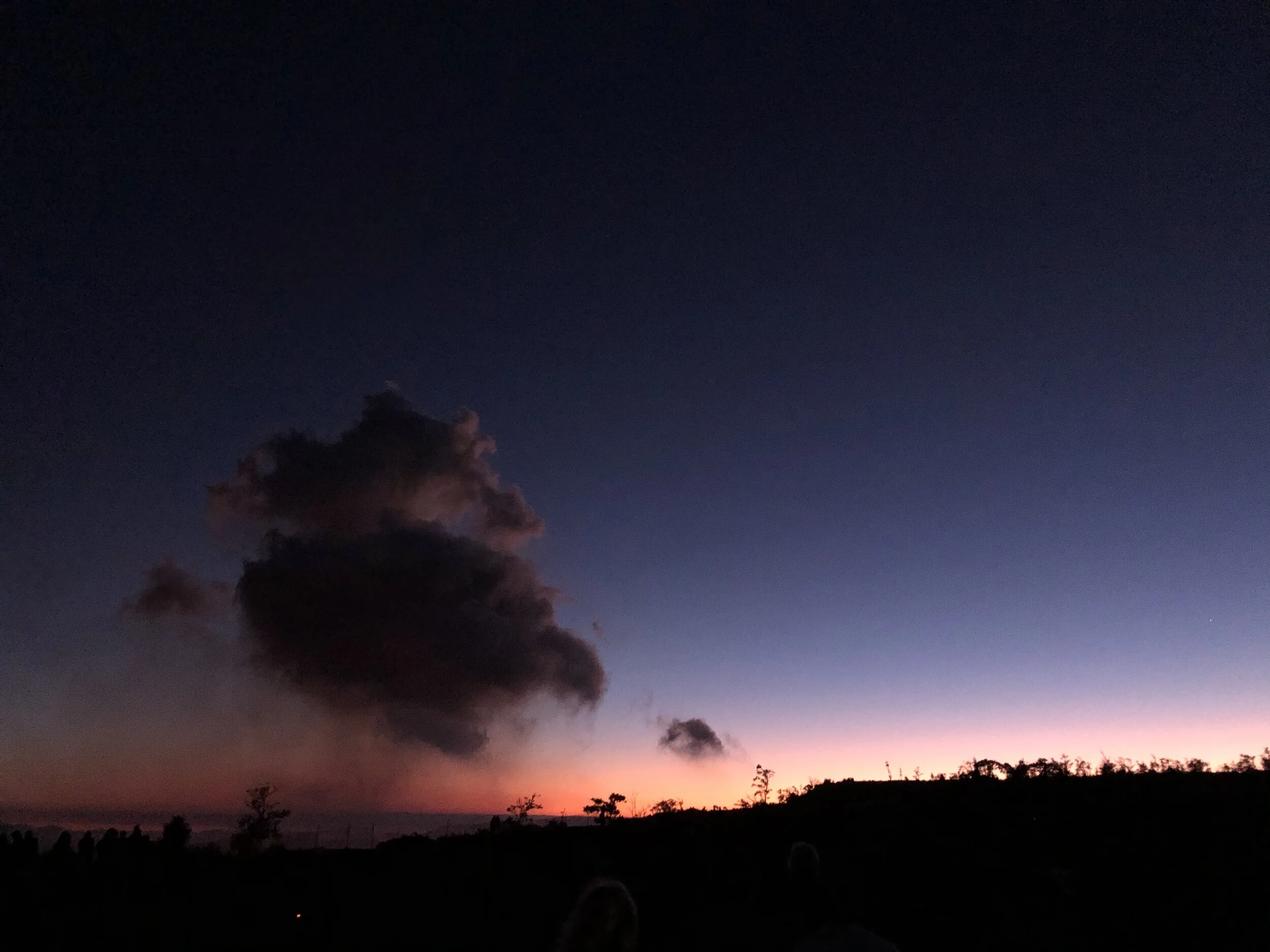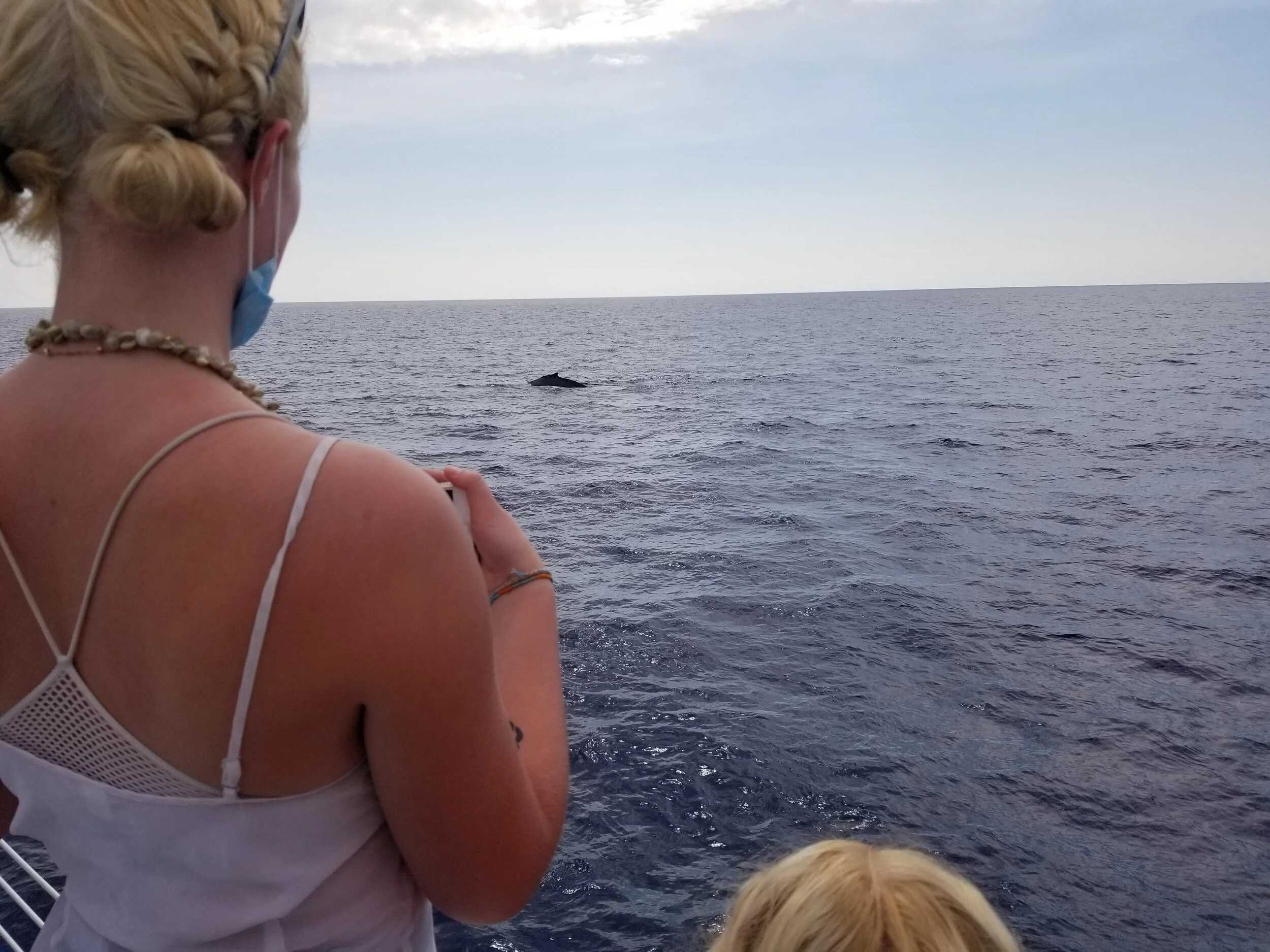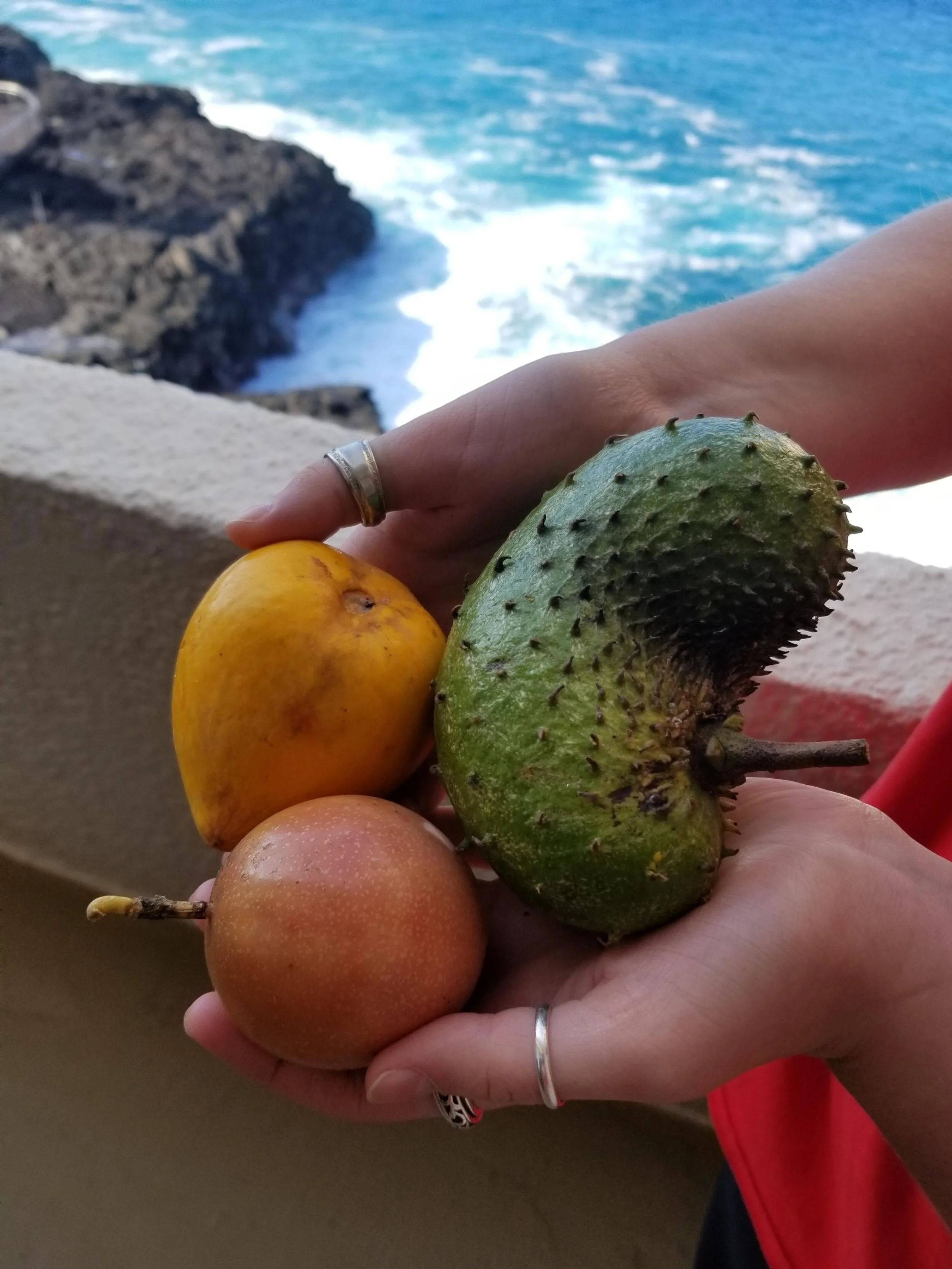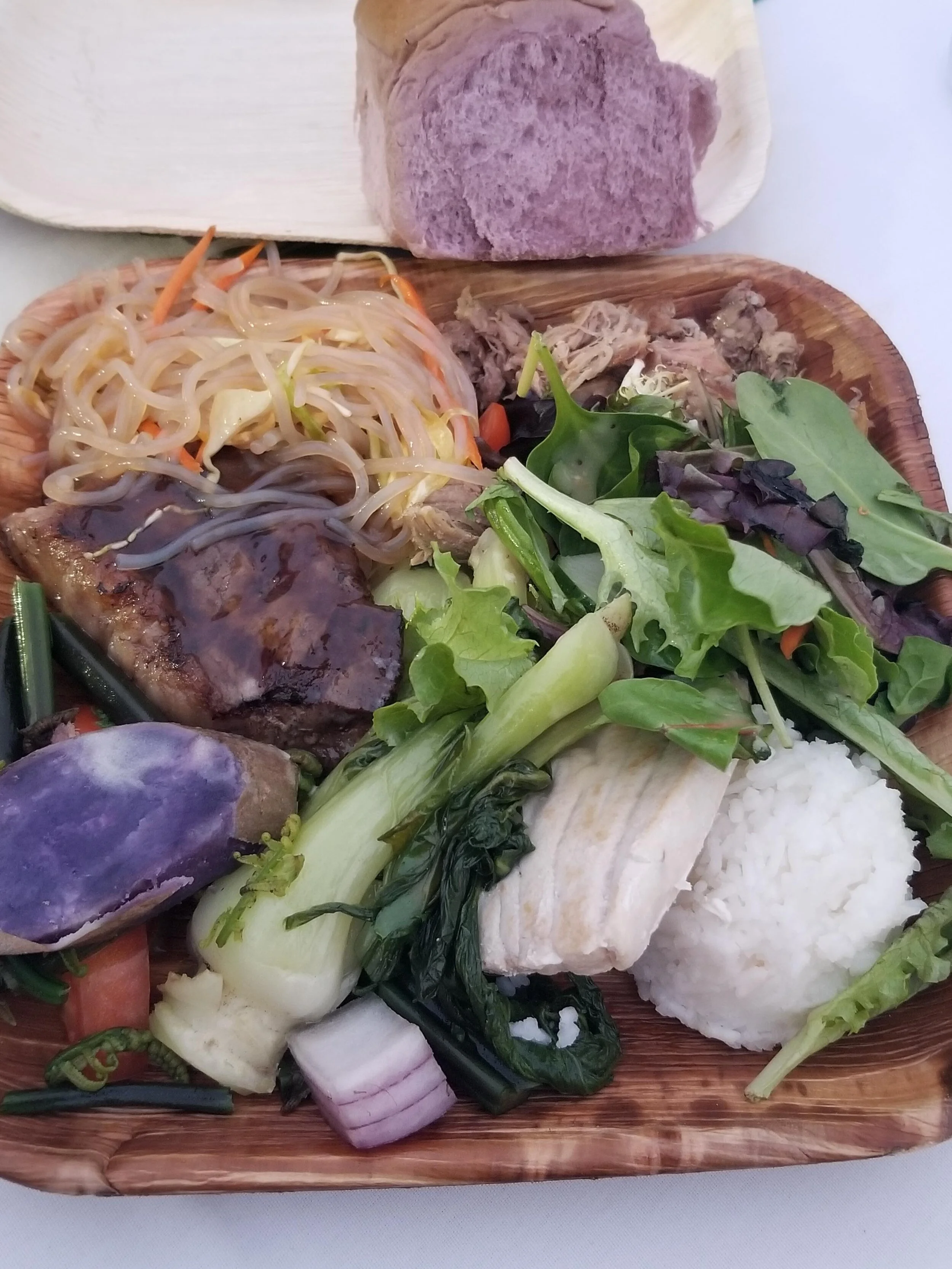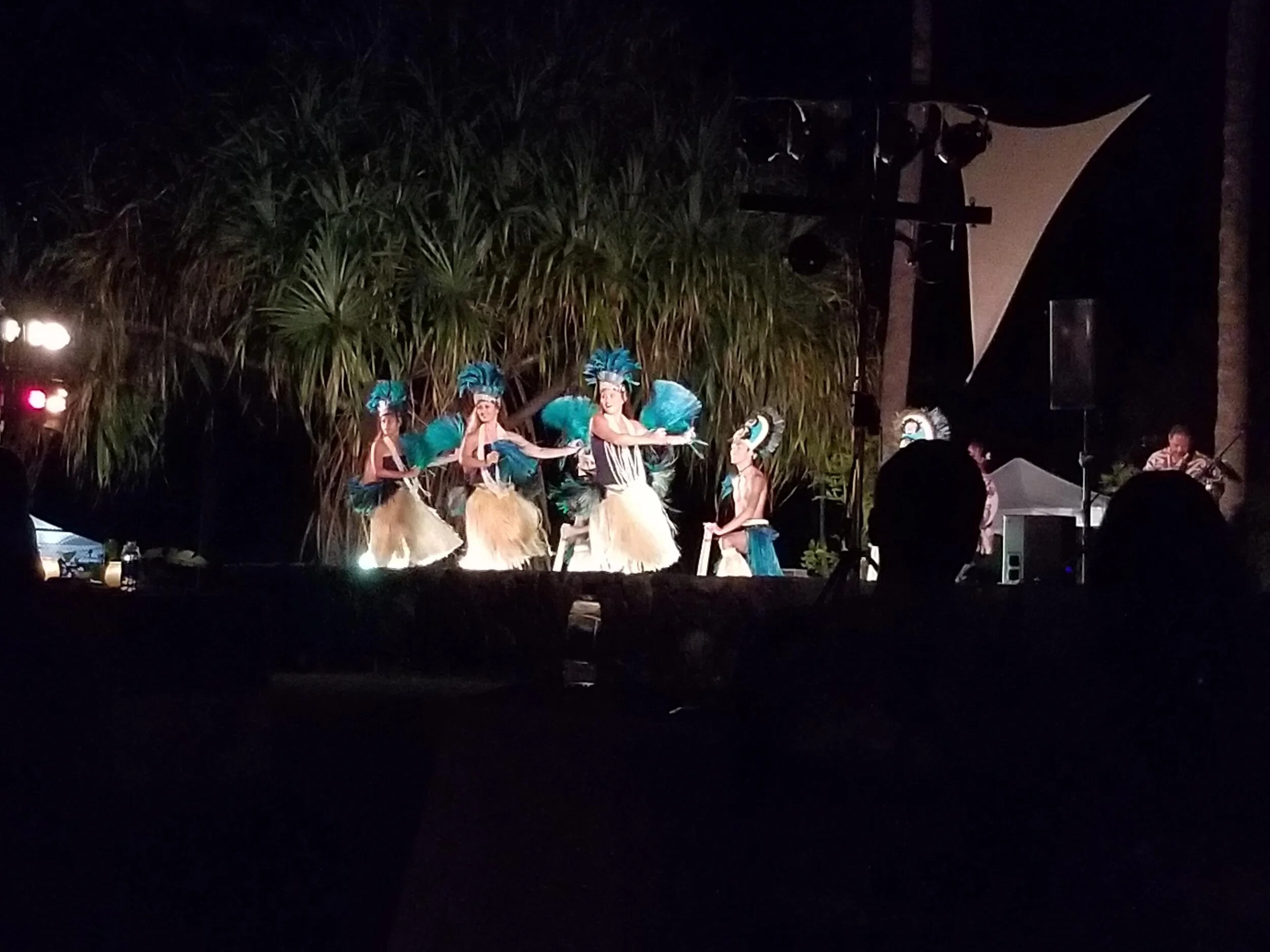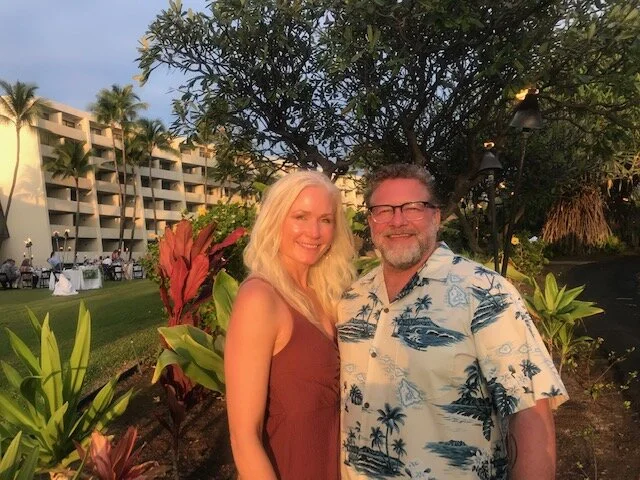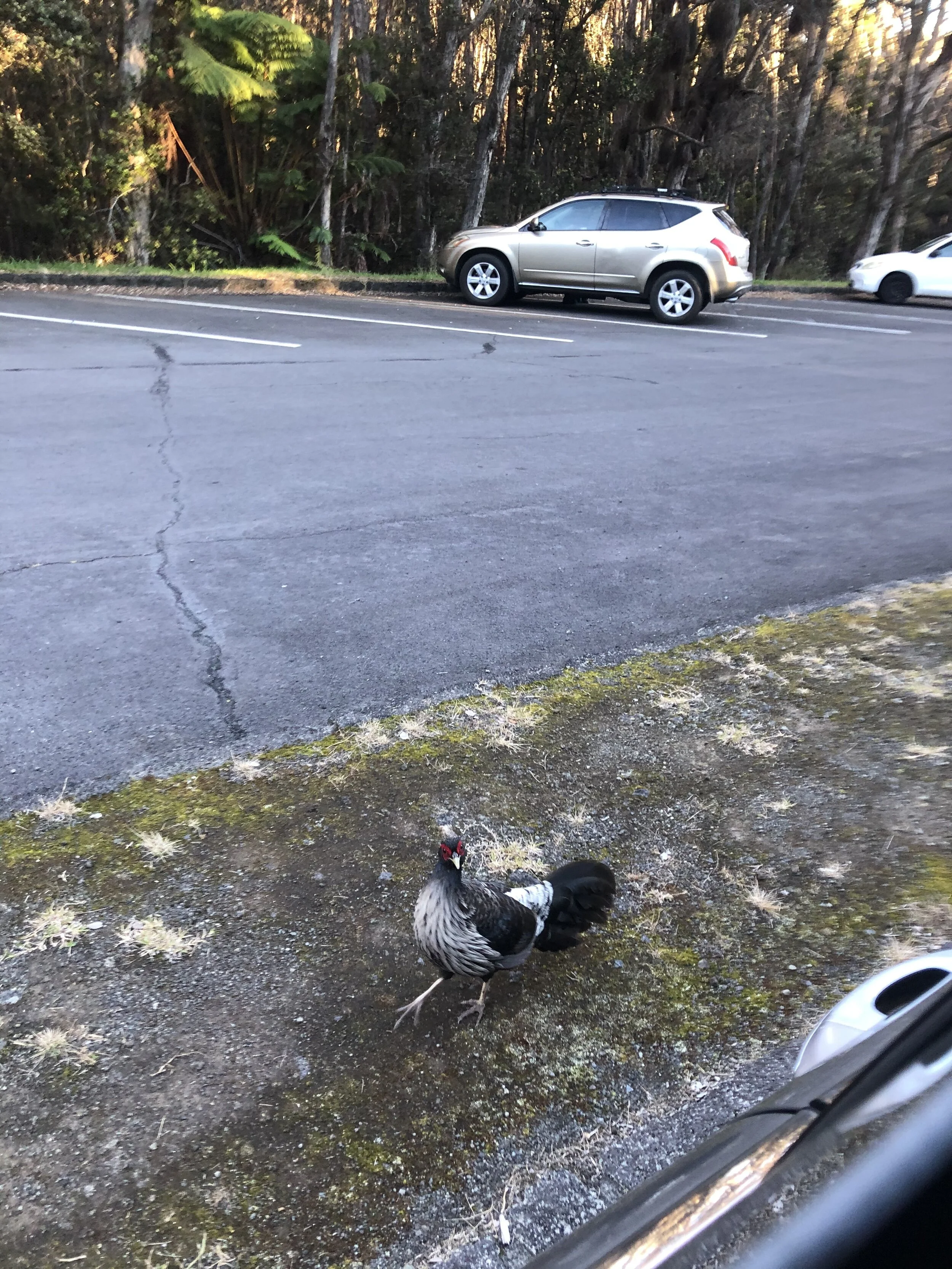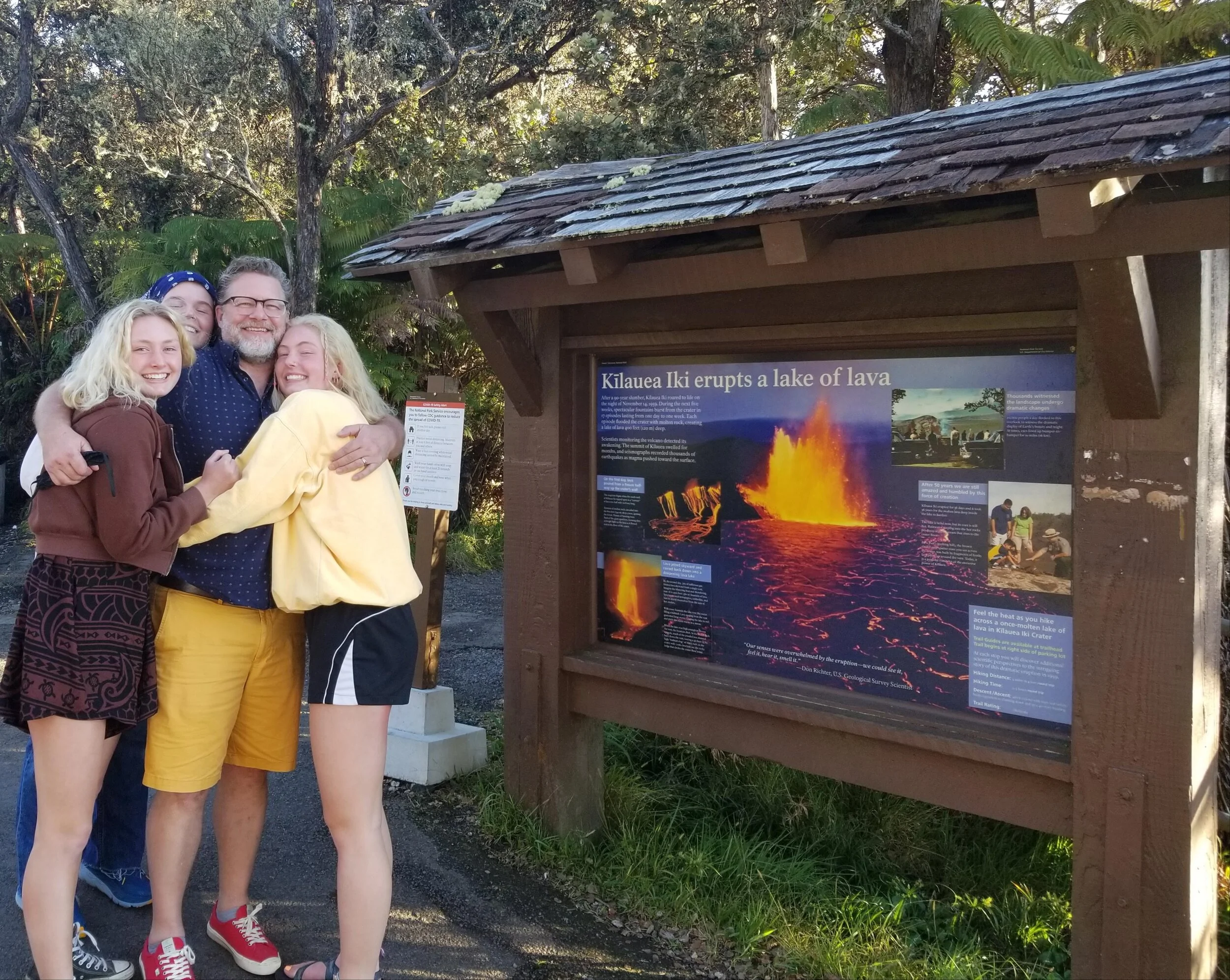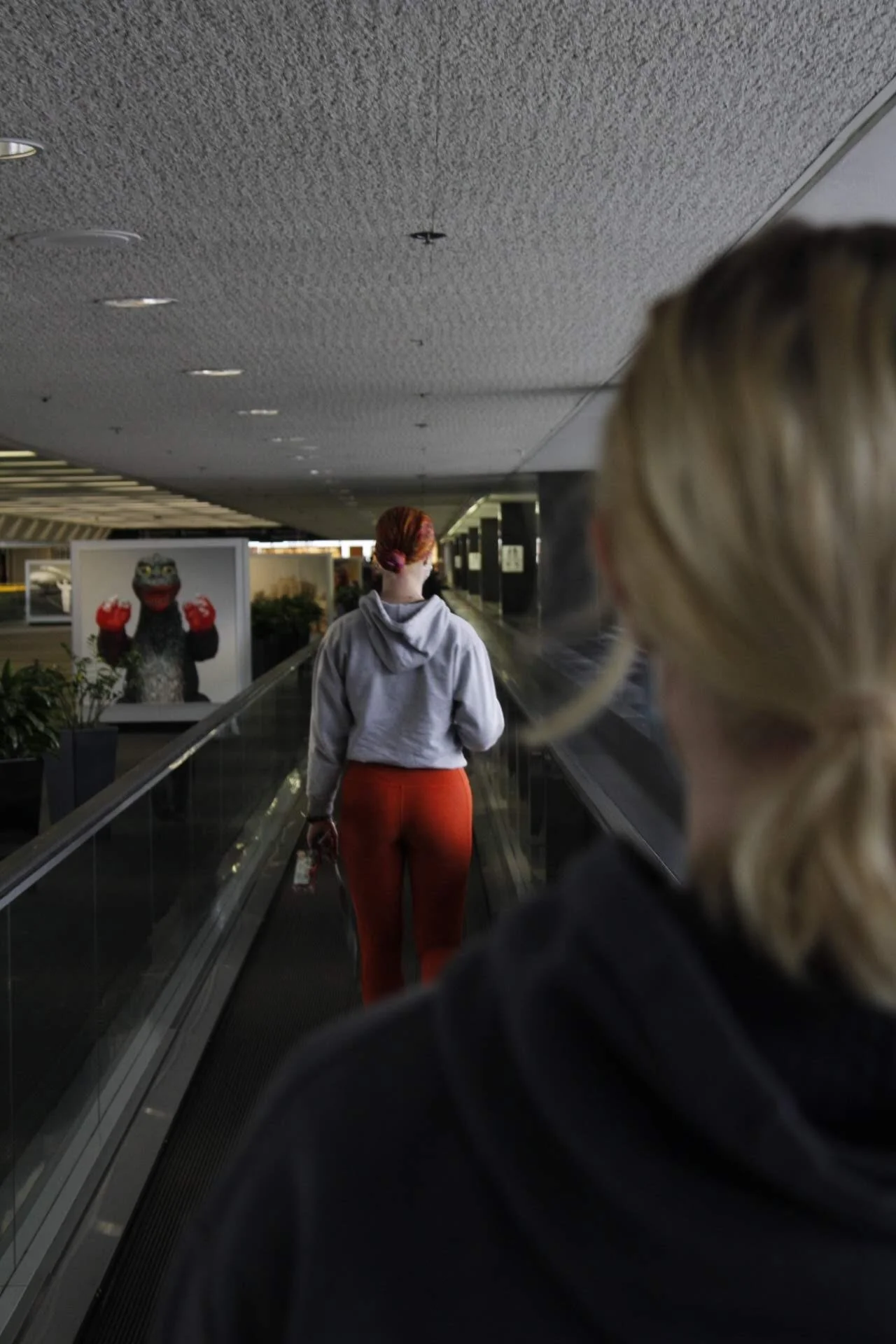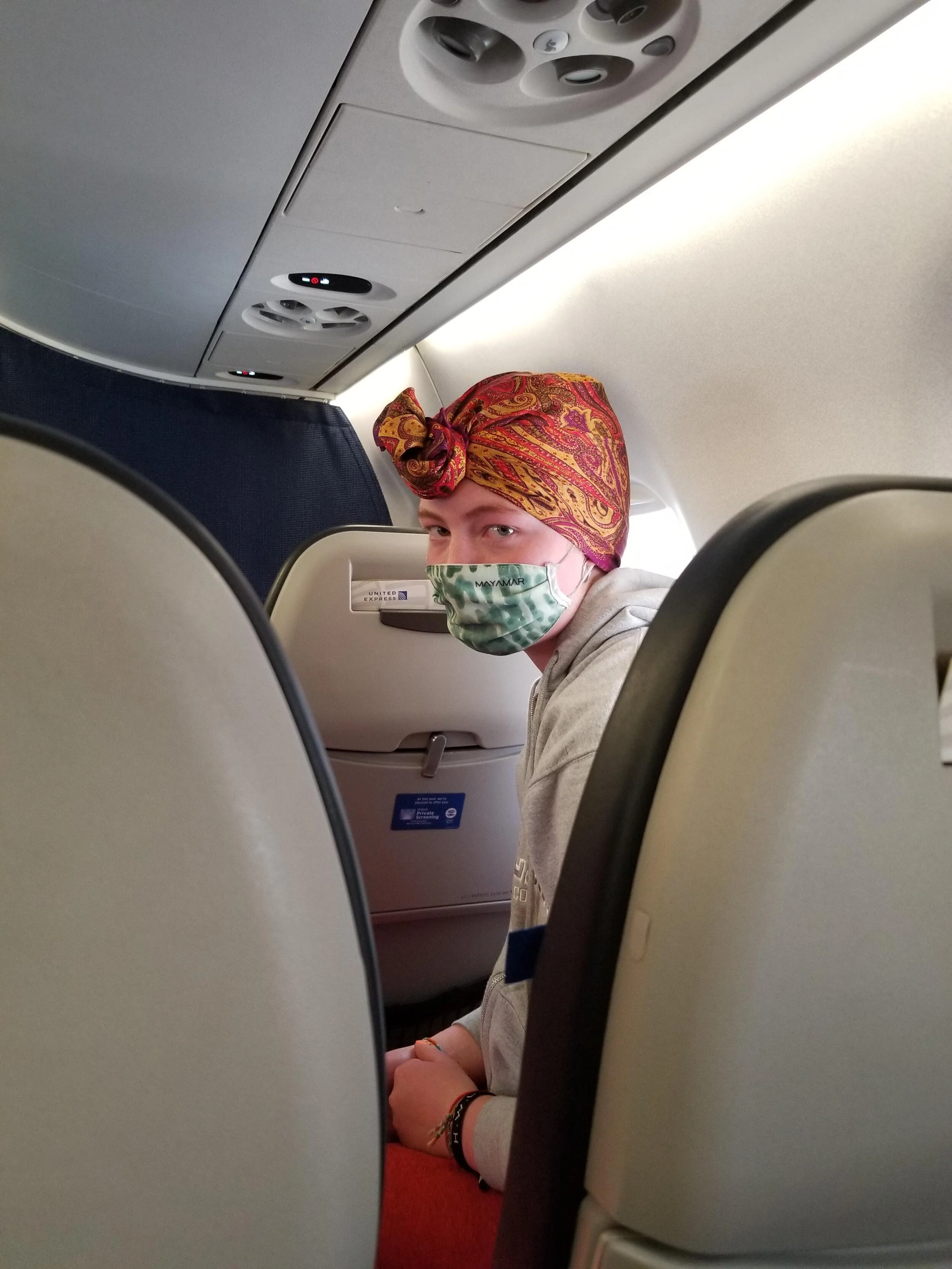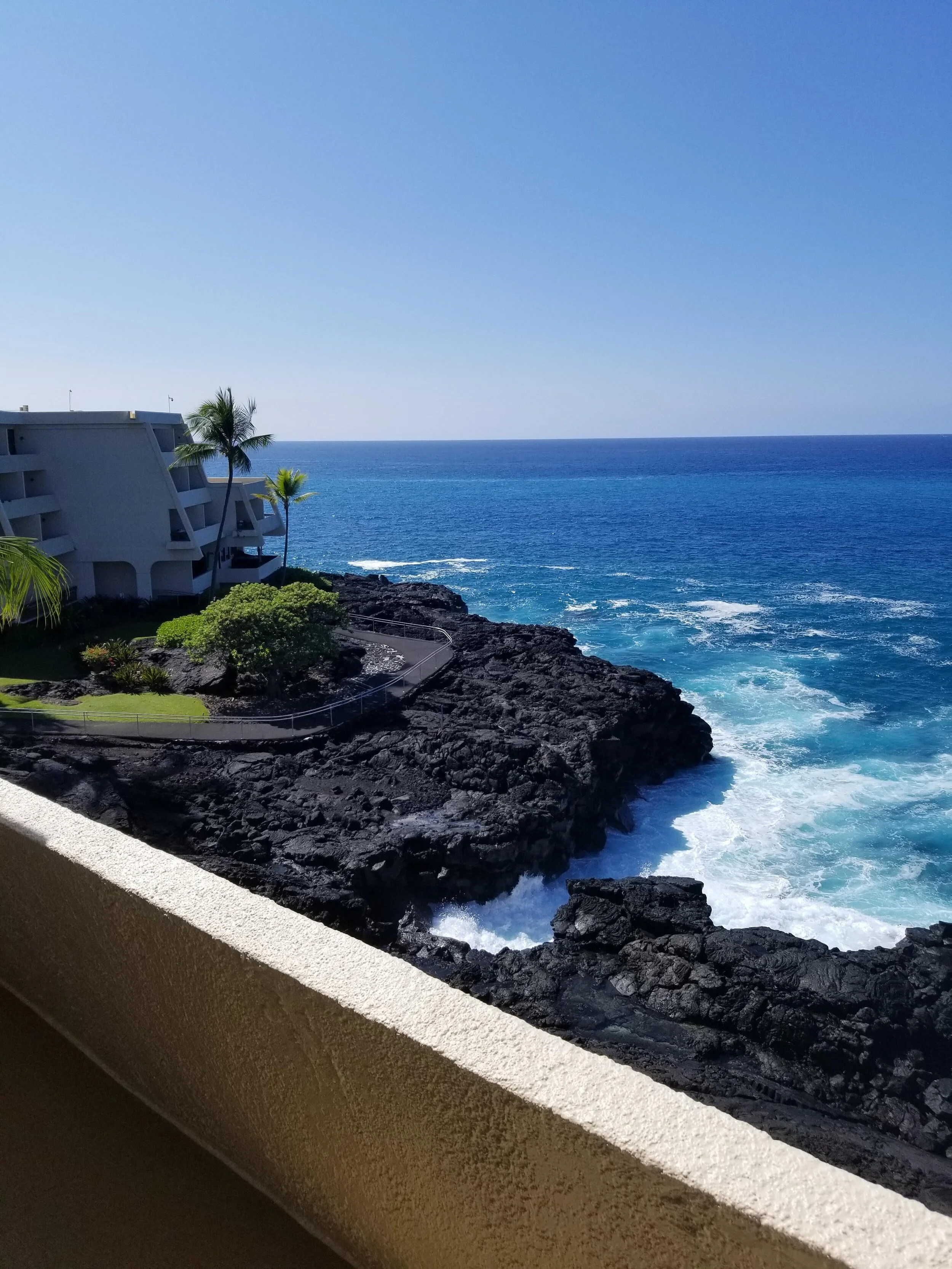Flight attendants doled out water and stroopwafels to sweeten our two hours parked on the tarmac in San Jose. Finally, we flew back to San Francisco, our trip ending in a successful landing.
The pilot’s voice came over the speaker. “We’re experiencing some mechanical trouble with the jetway. We ask for your patience as we fix the issue.”
We stayed planted in our seats, but nursed zero worries about the additional delay; our flight bound for Kona was already long gone. A vision of a person trudging ankle-deep through wet sand—something I hoped to actually do one of these days in Kona—flashed through my brain.
Six hours later, we boarded a flight—the last one of the day—to Kona. Darkness blanketed us when we landed at 10:30 p.m. When palm trees wave aloha and warm winds kiss your face in open-air terminals, though, who cares what time it is? We snaked through a line with our credentials and proof of negative Covid-19 results and were funneled into another line for more virus testing.
“No news is good news,” the medical technician said as he swirled a long swab in my nostrils. “If you don’t hear from us within the hour, it means you should just focus on having fun.”
In our rented Ford Edge, we buzzed along Queen Kh’ahumanu Highway to our hotel, The Sheraton Kona Resort & Spa at Keauhou Bay, in Kailua-Kona. No phone calls came from the airport medics to rattle our plans. At last we checked into our suite with an ocean view, and I dropped my baggage on the floor of our room on my way to the main attraction. I slid open the glass door and stepped onto the balcony to see it.
Shrouded by night, “the deep calling to deep” crashed against lava rocks, majesty exploding the shores far below. I shuddered and breathed in the mystery of the beyond.
Sometimes creation leaves a dent in one’s soul.
In the morning, we explored the hotel grounds. Tropical foliage dotted the open-air lobby, and swimming pools meandered throughout the manicured property. Christmas decorations draped pillars and entrances, reminding us where we really stood on the calendar. The shell leis the hotel gave us upon arrival dangled around our necks, and the temperatures in the low eighties beckoned us toward the waves.
“I have to tone my hair first,” Ricka announced back in the room as we packed our bags for the beach.
Say it isn’t so, I wanted to tell her. But instead, “You brought the coloring stuff here?”
She nodded, and Flicka and Dicka joined her in the bathroom. Maybe with a rest day and all the coconut oil, her yellow locks would survive this next assault. But what about the sun, salt water, and chlorine to come? Was insult to injury coming too?
Ricka emerged thirty minutes later with natural blonde hair. No hair loss today, thank goodness. And the yellow was gone.
I smothered my shock at the results. “Wow. Looks good.”
We scrambled to Magic Sands Beach—only one of its many names, I learned—and met up with nature’s power in the big surf. The sun warmed our winter skin, and waves shoved us off-balance. And as breezes ruffled our hair, gratefulness swelled in me that we all still had some left on our heads to ruffle.
We awoke the next day to emails containing the outcomes of our Covid-19 saliva tests from the morning of December 31: negative, times five.
“Not exactly rapid results,” I said, sipping my coconut-flavored coffee on the balcony.
“Not even remotely,” Husband said.
Dicka popped her head into our conversation. “We’re heading down to the ocean to swim.”
I smiled. “We’ll be down soon. Be careful.”
Husband and I lingered over our javas. I secured luau reservations for later in the week while he added sunrise and star-viewing jaunts to our agenda. His phone pinged.
“Is she all right?” he said to someone on the other end of the line. “Okay, we’ll come right down.” There was the pit in my stomach again. He clicked off the phone. “That was Ricka. Flicka stepped on a sea urchin. I guess she’s crying.”
Before hiking out to the rocky beach to assess the situation, we made a stop at the front desk.
“So, our daughter stepped on a sea urchin,” Husband said to the woman behind the counter. “Anything you recommend for that?”
“I mean, it’s an old wives’ tale,” she said, “but maybe pee on it?” Wasn’t that the treatment for jellyfish stings? Or was that the healing answer for most sea-related injuries? “Or you can try the Urgent Care up the road, but I don’t think they’d do much for you.”
We thanked her and picked our way down the jagged landscape to where Flicka sat on a rock, staring at the sole of her foot.
“You okay?” Husband said.
A few tears, a treatment decision, and soon Husband accompanied our limping oldest to the car. I stayed back with the two blonde fish who sprang from black rock ledges into turquoise waters. They surfaced for sips of air before climbing out to do it again—and again.
Later, Husband and Flicka returned from their Urgent Care trip with a tinfoil pan and a jug of something.
“Apparently a vinegar soak will dissolve the spines in her foot faster,” he said.
“The doctor said legends out there say the bits of sea urchin will grow a new body inside you,” Flicka said with a chuckle. “They won’t.”
I wasn’t worried. I pictured the unfortunate sea urchin, though, minding his business, submerged and clinging to a rock like he did every day, until a foot came at him, breaking off his needles. Poor guy.
And my poor girl too.
We drove to Volcanoes National Park, timing our arrival for an hour before dusk. The highlight was the active volcano—the new eruption of Kilauea—visible after dark, we’d been told. Inside the entrance to the park, we pulled into a lot and sat in the car while we viewed a brochure, planning what we’d see in our last hour of light.
“I wonder what a nēnē is,” I said, pointing to a nearby sign. From the picture, the nēnē looked like a goose, and we were supposed to keep it wild and not feed it. But there was another slashed-out image on the sign too: a person with a dog on a leash. “So, no dogs can be on leashes around the nēnē? Or what?”
“Hey, there’s one of them,” Dicka said from the back seat. About ten feet away from the left side of the car was something resembling an exotic chicken.
The girls lowered a window, and several of us grabbed our phones to capture the moment. Like a celebrity tired of the paparazzi, though, the bird’s head swiveled our way, its gaze lasering in on us, and it charged our vehicle with surprising speed. What was happening?
“Dad, go!” a few people from the back seat hollered. Frantic, Ricka pecked at the button to roll up the window.
“What on earth—?” Husband threw the car into drive, mashed the accelerator, and we peeled away toward Chain of Craters Road.
*Tune in next week for the third installment of our Hawaiian adventures. Mahalo!


















